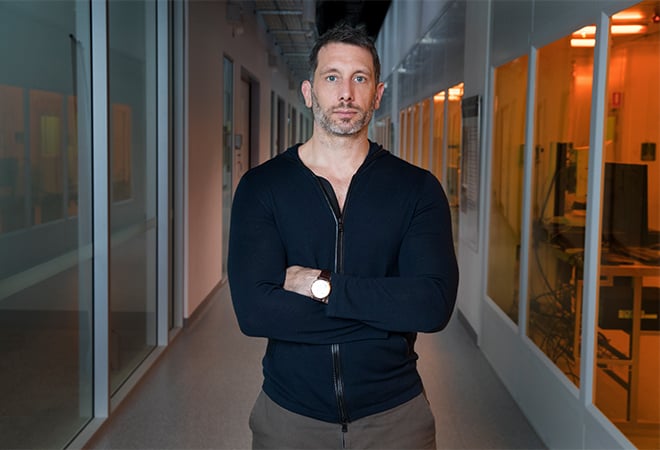Why is there such a yawning gap between research success and commercial outcomes in Australia? Universities have come under immense pressure to demonstrate commercial impact from publicly funded research in response to government policy changes and incentives. In the process, they are adopting tactics as “best practice” that may ultimately do much more harm than good.
We need a fundamental realignment of the sector to be Founder First; putting researchers rather than research outcomes front-and-center is the key to commercialisation success.
Startups and spinoffs as key drivers of innovation
Australian industry self-identifies as “not innovative,” according to the Chief Economist. As a result, incentivising deep collaboration between Universities and existing incumbent industries runs the risk of dragging innovative researchers down, rather than lifting industry up.
Startups are therefore a natural channel for entrepreneurial teams to pursue commercial opportunities in research translation, a sector of the market sometimes called deep tech. Leveraging deep tech opportunities – as we did in standing up Q-CTRL, Australia’s first VC backed quantum technology startup – requires an alignment of expectations between Government, Universities, and private sector investors.
Universities implicitly produce exactly what private sector investors want – highly skilled technical teams. The expertise and creativity of these teams are unique assets that need to be better recognised at all levels. The evidence speaks for itself; many of the most profoundly impactful technologies we use daily have emerged from university research projects.
Despite this, current incentives and policies lead Universities to prioritise technology and IP rather than founders. Moreover attempts by commercialisation offices to negotiate lucrative but restrictive IP licensing deals can drive private-sector venture capitalists away; interminable licensing negotiations pose an existential risk for most startups.
Bridging this gap requires a reworking of University commercialisation strategy to be founder-focused, putting experts and potential founders forward to the market rather than their research outcomes. This should be complemented by a creator-owned approach to IP which allows agility and removes roadblocks to private-sector investor engagement.
A skills gap?
Academics and researchers have considerable prep work to do before they’re ready to take a research outcome to market. Much of this relates to the difference in skills required to navigate the two sectors. Commercial opportunities can feel alien to most researchers, and they need to learn both how the commercial world works and how they can fit into it.
Universities and investors can start by helping academics understand that their backgrounds actually prepare them well for becoming founders. The ability of researchers to craft narratives around their work and engage with audiences with differing levels of expertise translates directly to pitching and sales in commercial settings, even if most researchers don’t know it.
When making the transition to founding Q-CTRL, becoming comfortable with commercial opportunities required a reframing of my choices as residing between seeking the truth as an academic and pursuing opportunity in a startup.
This never meant sacrificing truth for opportunity – that’s against two of our core values: Be Real and Be Trusted. But embracing this view helped me accept risk more willingly, and better prioritise activities that set our path to market dominance rather than getting bogged down in hand-wringing about what could go wrong.
Culture matters
Deep tech founders bring much more to the commercial world than just their efforts building totally new technologies. They bring a unique culture to the startup sector that needs to be recognised and appreciated by all sides.
Academics and researchers looking to become founders are often skeptical of the cultural excesses of tech (e.g. “Tech Bros”). More specifically, most academics are acutely sensitive to BS and often consider it almost a personal offence to be given a BS argument relating to their work.
Investors need to learn that “sales” tactics that may work organically in the general tech sector can really rub many deep tech founders the wrong way.
The personal motivations of potential founders can differ, and neither a commercial focus nor a community-service focus is right or wrong. In cases where an investor really wants to make an argument for a researcher to pursue a commercial opportunity, they need to frame their pitch in such a way that they respect the specific “cultural” background of deep tech founders.
The long view
Nonetheless, I frequently hear VCs lament a “stubborn” researcher who won’t jump on a huge market opportunity.
Government and investors also need to accept that commercialisation won’t appeal to everyone and that that’s ok! Not every researcher should be expected to pursue commercial opportunities – even if potential markets are large.
This diversity of viewpoints is actually essential to innovation; someone has to solve tough, long-term problems with social impact that may never return commercial rewards, like curing poverty diseases.
At a higher level, however, the innovation ecosystem only works when we respect a separation of timescales – entrepreneurs pursuing short-term commercial gains, deep tech founders and researchers engaging in highly technical applied science, and academics maintaining focus on long-term high-impact fundamental research. Shifting large numbers of academics away from their unique role pursuing long-term public-good research can destabilise the entire framework through which we realise technological innovation.
There is a path forward for improving research translation to commercial success stories. Following this path requires a fundamental reworking of the misalignment between public sector incentives and private sector expectations. We can do it if we start now.E




















Trending
Daily startup news and insights, delivered to your inbox.